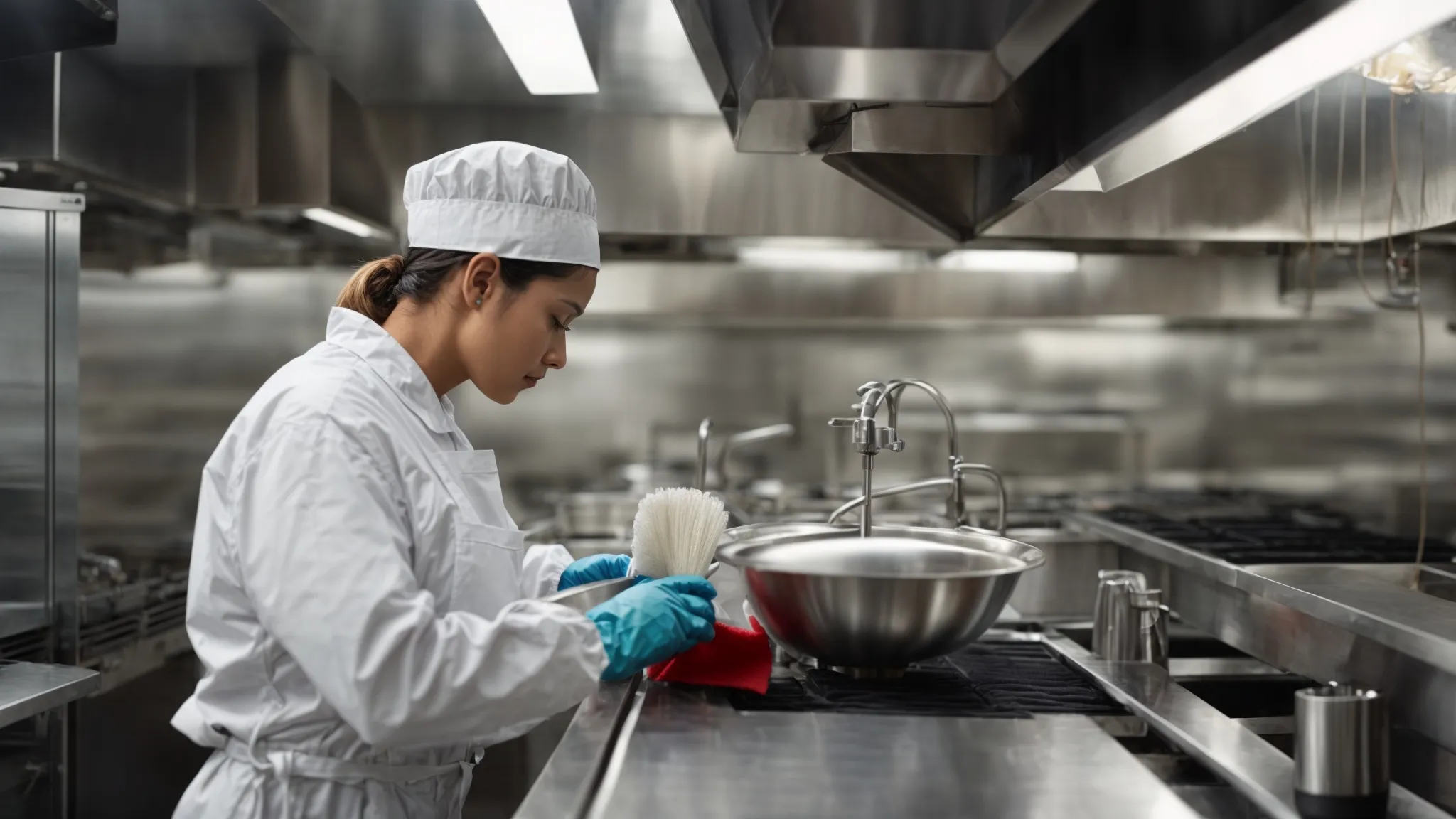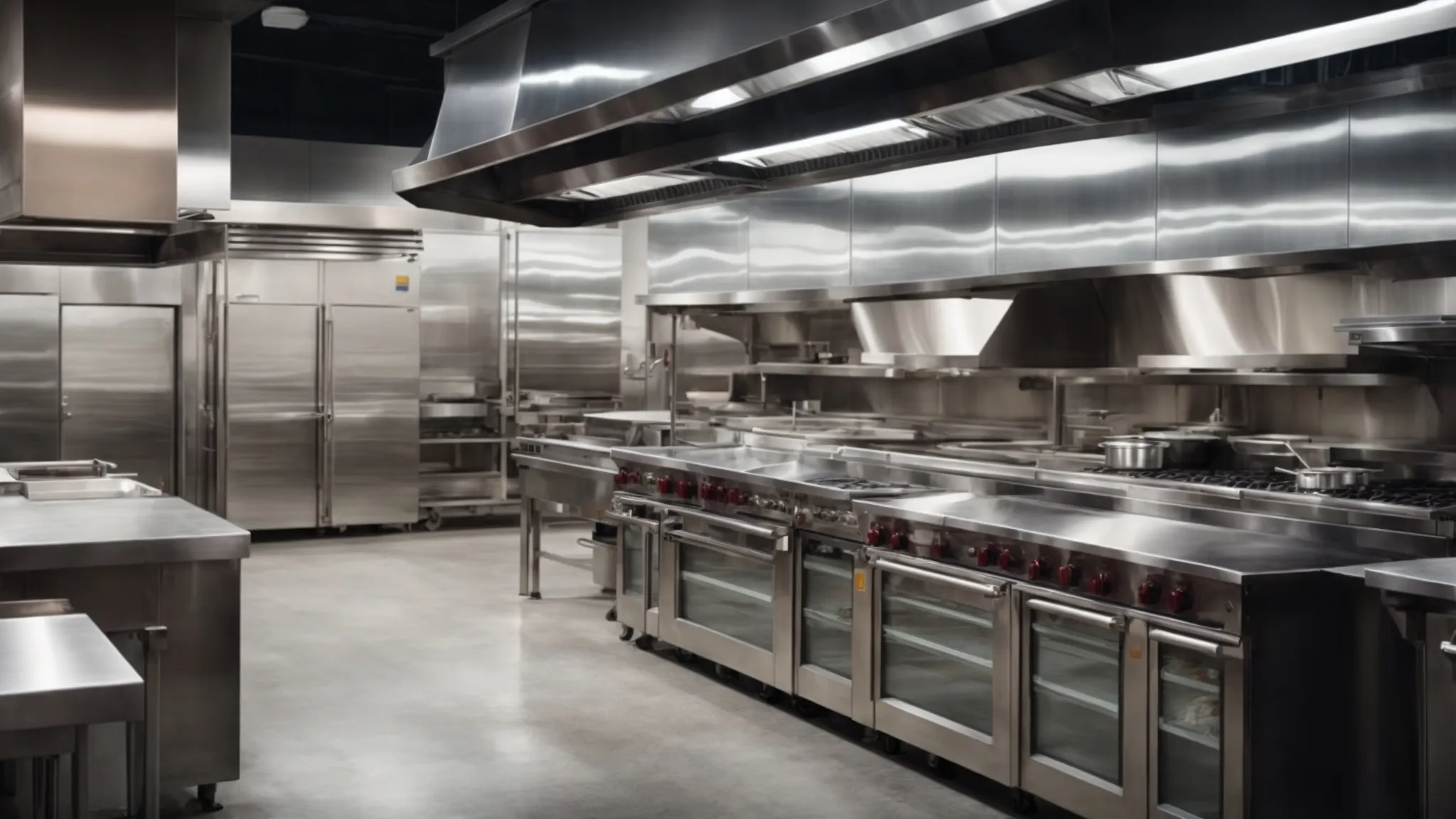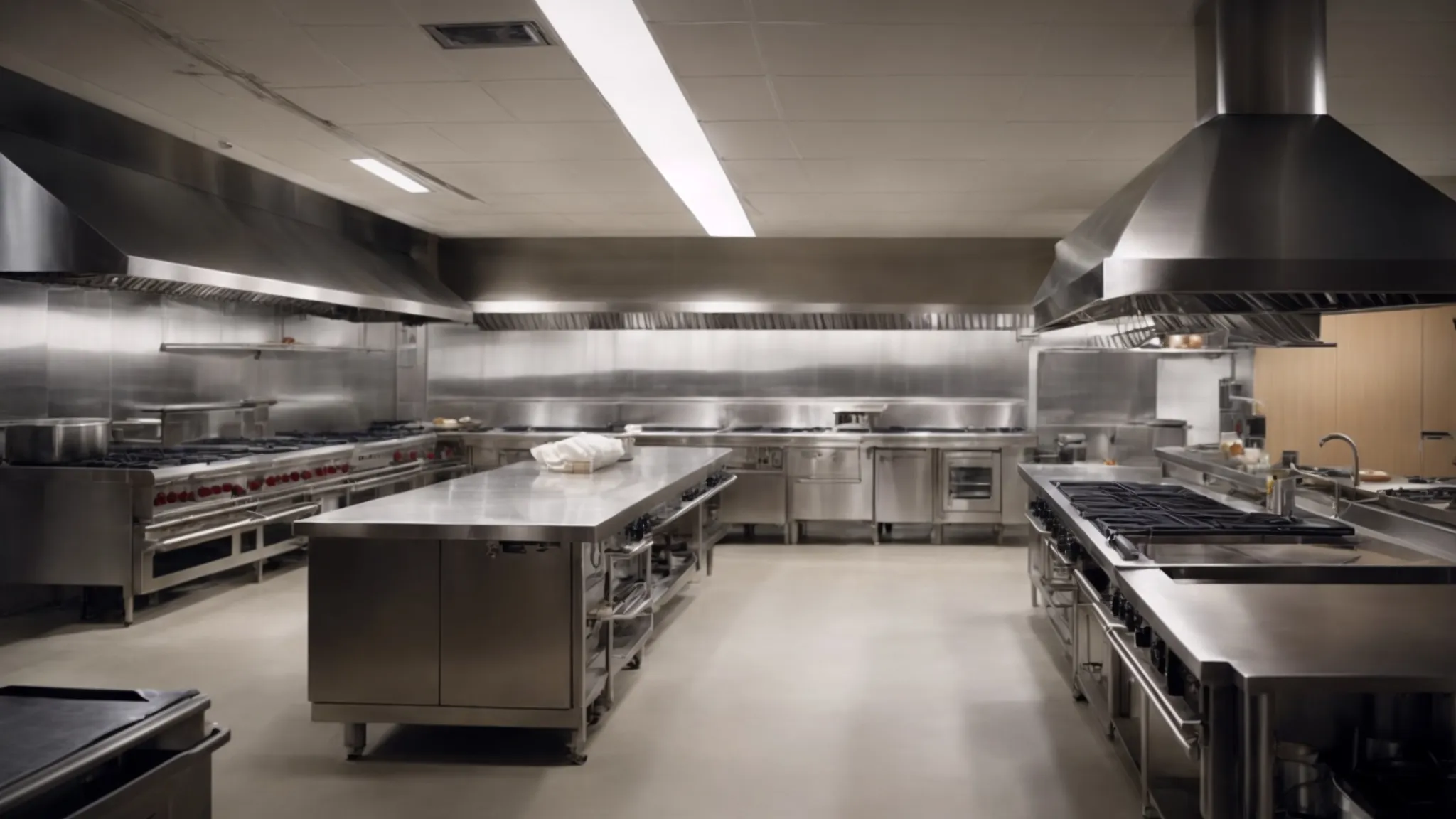Expectations and Expenses: Hood Cleaning Services Explained
Navigating the realm of commercial kitchen maintenance, the significance of hood cleaning services cannot be overstated.
They are not just a regulatory requirement but a cornerstone of fire safety and kitchen hygiene.
Understanding what encompasses these services, their frequency, and the factors that influence their costs can be quite enlightening for restaurant owners and managers.
Equally important is knowing how to prepare your kitchen for such a specialized clean-up and distinguishing between different service providers to ensure your commercial kitchen operates smoothly and safely.
Keep reading to demystify the essentials of hood cleaning services, from expectations to expenses.
Key Takeaways
- Hood Cleaning Is Essential for Safety, Compliance, and Maintaining Kitchen Equipment Efficiency
- Regular Maintenance Helps Prevent Emergencies and Reduces Potential Costly Repairs
- The Frequency of Hood Cleaning Depends on the Type of Cooking and the Kitchen’s Operational Volume
- Partnering With a Certified and Experienced Hood Cleaning Service Like Ontario Hood Cleaning Ensures Quality and Compliance
- Planning and Preparation Minimize Disruptions During the Cleaning Process, Ensuring Business Continuity
Understanding the Basics of Hood Cleaning Services

Transitioning into the pivotal aspects of Ontario Hood Cleaning Services, it’s important to grasp the essence of what hood cleaning entails and its critical role within the commercial kitchen environment.
At its core, hood cleaning is not just a regulatory compliance requirement but a fundamental element in ensuring a safe, efficient, and clean cooking atmosphere.
This process targets the removal of flammable residues like fats, oils, and grease that accumulate in a kitchen’s exhaust system, components of which are intricately designed to ensure the removal of smoke and odors from the cooking area.
Understanding these basics highlights the necessity of regular maintenance to prevent fire hazards, enhance air quality, and extend the lifespan of kitchen equipment.
What Is Hood Cleaning and Why Is It Necessary?
In order to maintain the operational excellence and safety of commercial kitchens across Ontario, Canada, Ontario Hood Cleaning offers hood cleaning services. This involves the meticulous cleaning of the kitchen exhaust system, including the hood, filters, ductwork, and fans, to remove accumulated grease and debris. Such preventive measures are indispensable for mitigating the risk of kitchen fires, which can arise from the ignition of grease buildups within the exhaust system.
Moreover, regular hood cleaning is not only a matter of safety but also regulatory compliance. In most jurisdictions, including Ontario, commercial kitchens are required by law to adhere to strict sanitation and fire safety codes, which include the thorough cleaning of the hood and exhaust system. Ontario Hood Cleaning ensures that businesses meet these codes, protecting them from potential fines and operational disruptions. Their comprehensive hood cleaning services ensure that every nook and cranny of the exhaust system is free from grease and contaminants, thus maintaining a safe environment. Contact Us
Beyond compliance and safety, the necessity for hood cleaning extends to the longevity and efficiency of the kitchen equipment. Over time, the accumulation of grease and particles can exert undue stress on the exhaust system, leading to decreased efficiency and the potential for costly repairs or replacements. By employing the hood cleaning services of Ontario Hood Cleaning, restaurants, and commercial institutions ensure the optimal performance of their equipment, contributing to a more productive and cost-effective operation.
The Key Components of Your Kitchen’s Exhaust System
The kitchen’s exhaust system is an intricate assembly that begins with the hood itself, designed to capture cooking vapors and airborne grease. As the frontline defence against fire hazards, it plays a pivotal role in the overall safety and cleanliness of a commercial kitchen. Ontario Hood Cleaning
Following the hood, the Ontario Hood Cleaning Filters serve as a critical barrier, trapping grease particles and other debris before they enter the ductwork. Their effectiveness is fundamental to maintaining an unobstructed airflow, which is essential for efficiently carrying away smoke and odors from the cooking area.
Lastly, the ductwork and exhaust fans work in tandem to expel the captured vapors and contaminants outside the building. This system’s seamless operation is key to preventing the buildup of grease within the kitchen and ensuring a fire-safe environment. Contact Us
Now that you’ve grasped the essentials of hood cleaning, let’s tackle the next big question. How frequently should you enlist a professional to keep your kitchen exhaust spotless?
How Often Should You Schedule a Professional Hood Cleaning?

Deciding on the frequency of professional hood cleaning goes beyond a set schedule; it requires a detailed understanding of regulatory standards coupled with an insightful assessment of your Ontario Hood Cleaning’s unique demands.
Compliance with local fire safety and health regulations is not negotiable, making familiarization with these mandates a starting point for determining cleaning intervals.
Yet, the specific needs of your kitchen, influenced by its size, usage volume, and type of cooking, play an equally vital role.
Every kitchen operates differently, and embracing a tailored approach ensures the safety, efficiency, and longevity of your kitchen’s exhaust system.
Thus, navigating these considerations lays the groundwork for maintaining high standards of cleanliness and compliance, safeguarding your establishment against risks of fire and health violations.
Contact Us, Our Blog, Areas Served, Ontario Hood Cleaning
Regulatory Standards and Compliance Requirements
Navigating the regulatory landscape is crucial for any establishment seeking hood cleaning services. In Ontario, the compliance requirements are set forth by local health and fire safety authorities: guidelines outlining the necessary standards for clean and safe commercial kitchen operations.
These regulations ensure that businesses adhere to a framework designed to minimize fire risks and promote hygienic food preparation areas. Compliance is not simply a matter of legality but a commitment to customer safety and business integrity.
Consequently, understanding and meeting these standards is imperative for restaurants and commercial kitchens to maintain operational licenses. Ontario Hood Cleaning provides services that align with these regulatory requirements, affording peace of mind to business owners:
| Service | Regulatory Compliance | Benefits |
|---|---|---|
| Hood Cleaning | Fire Safety Codes | Reduced fire hazards |
| Kitchen Exhaust Cleaning | Health Standards | Improved air quality |
| Equipment Cleaning | Sanitation Codes | Enhanced equipment longevity |
Assessing Your Kitchen’s Specific Needs
Identifying the specific needs of a kitchen is a crucial first step in maintaining an efficient and safe environment. The type of cooking and the volume of food processed directly impact the frequency of required hood and exhaust system cleanings. For instance, kitchens that specialize in high grease or smoke-producing cooking methods, such as grilling or frying, may necessitate more frequent cleanings.
Understanding the frequency and intensity of kitchen operations aids in devising a tailored cleaning schedule. Business owners should consider not only the type of cooking they do but also the hours of operation and peak serving times. Such specifics ensure that the cleaning services are designed around their unique needs, preventing any disruption in business operations:
| Type of Cooking | Hours of Operation | Recommended Cleaning Frequency |
|---|---|---|
| High Grease/Smoke | Extended | Monthly |
| Moderate Grease | Standard | Quarterly |
| Low Grease | Limited | Semi-Annually |
Additionally, the layout and size of the kitchen play a significant role in determining its cleaning needs. Larger kitchens with complex exhaust systems may require more detailed inspections and cleanings, while smaller setups might benefit from less frequent yet thorough services. This consideration ensures that each business receives a cleaning plan that is just as unique as its operations.
Understanding the frequency of professional hood cleanings sets the stage. Next, let’s unravel the mystery surrounding the costs of keeping those hoods pristine.
Breaking Down the Cost Factors in Hood Cleaning Services

Peeling back the layers on the cost considerations for hood cleaning services unveils a spectrum of variables that establishments must reckon with.
Predominantly, the size of a kitchen and the extent of grease accumulation emerge as primary factors, directly influencing the scope and frequency of cleanings required.
Beyond the apparent costs of standard services, there lies a realm of additional expenses that restaurant and commercial kitchen owners should be vigilant of.
These might encompass emergency cleanings, repairs stemming from neglected maintenance, or specialized cleaning procedures for high-end equipment.
Understanding these cost components is essential for businesses aiming to balance financial planning with the imperative of maintaining a safe and compliant kitchen environment.
The Role of Kitchen Size and Grease Accumulation
The role of kitchen size in hood cleaning services cannot be overstressed, as larger kitchens often house more complex and extensive exhaust systems. This complexity and scale directly affect the workload involved in cleaning, thereby influencing the overall cost. The size determines not only the duration but also the resources needed to ensure a thorough cleaning, making it a pivotal factor in cost estimation.
Grease accumulation plays a similarly critical role in dictating the nuances of hood cleaning services. Kitchens that experience high volumes of cooking are prone to faster grease buildup, necessitating more frequent cleaning schedules. These factors combine to increase the service demand, pushing up both the urgency and the price of hood cleaning operations, as more intensive labor and specialized equipment are required to address heavy grease deposits effectively.
Together, kitchen size and grease accumulation form the cornerstone of cost considerations in hood cleaning services. A nuanced understanding of how these elements interact allows Ontario Hood Cleaning to offer tailored services. This ensures that each client receives a comprehensive cleaning solution that is not only effective but also cost-efficient, aligning with the specific needs and operational dynamics of their kitchen.
Considering Additional Expenses Beyond the Basic Service
The conversation about expenses in hood cleaning services isn’t complete without addressing those that stretch beyond the directly perceivable ones. Emergency cleanings often represent a significant, unplanned financial burden: sudden issues necessitating immediate attention can disrupt both operations and budgets. This critical aspect underscores the importance of regular maintenance to sidestep unexpected financial strains stemming from emergency interventions.
| Additional Expense | Reason for Expense | Potential Cost Impact |
|---|---|---|
| Emergency Cleaning | Unforeseen grease build-up or system failure | High |
| Repairs | Damage from neglect or improper cleaning | Variable, often substantial |
| Specialized Equipment Cleaning | High-end or sensitive kitchen equipment | Higher than standard cleaning services |
Moreover, overlooked maintenance can lead rapidly to situations necessitating repair or replacement of parts within the hood and exhaust system. The cost implications of these can vary significantly, pivoting on the extent of damage and the specific components affected. Prompt and regular cleaning thus emerges not just as a compliance measure, but as a strategic financial decision to minimize the incidence and severity of repairs.
Finally, the need for specialized cleaning procedures for high-end or particularly sensitive kitchen equipment introduces another dimension to the cost structure. Such equipment might require non-standard approaches or cleaning agents, leading to costs that surpass those of regular hood cleaning services. Transparent communication with a professional service provider about the particular demands of one’s kitchen equipment is vital to ensure both effective and efficient cleaning without incurring unexpected expenses.
Shifting gears, let’s gear up your commercial kitchen for its next big refresh. Excitement mounts as we lay out the ultimate preparation checklist for a hood cleaning visit.
Preparing Your Commercial Kitchen for a Hood Cleaning Visit

Securing a seamless transition through a hood cleaning service for your commercial kitchen requires meticulous preparation.
Before the specialized team from Ontario Hood Cleaning arrives, there are important steps that establishments need to undertake to facilitate an unobstructed and efficient cleaning process.
Not only does this preparation serve to ensure that the cleaning crew can perform their duties with optimal efficiency, but it also plays a pivotal role in minimizing disruption to kitchen operations.
Engaging in thorough preparation allows for business continuity before, during, and after the cleaning service, safeguarding against any potential operational downtime or unexpected hiccups.
Steps to Take Before the Cleaners Arrive
Ensuring a successful hood cleaning service begins with planning and preparation on the part of the commercial kitchen’s management. Prior to the arrival of Ontario Hood Cleaning’s specialized team, it’s essential that kitchen operations are adjusted to accommodate the cleaning process. This initial step can significantly streamline the cleaning procedure, minimizing operational disruptions and ensuring the safety of all involved.
Communication is key to a smooth hood cleaning experience: inform your staff about the scheduled cleaning to prepare them for any necessary adjustments to their work schedule or kitchen usage. Clear instructions should be given regarding the cessation of cooking activities and the securing of sensitive equipment. This precaution not only facilitates a quicker cleaning process but also prevents any potential damage to kitchen assets.
Pre-clean preparation involves a few pivotal actions that can dramatically improve the efficiency of the hood-cleaning process:
- Cool down all cooking equipment to ensure a safe environment for the cleaning crew.
- Remove any portable items and kitchenware from the hood area to provide unobstructed access.
- Secure delicate or electronic equipment with a protective covering to shield against any potential spills or splashes during cleaning.
By taking these straightforward measures, restaurants can set the stage for a thorough and effective hood cleaning session. This not only enhances the longevity and functionality of the kitchen’s exhaust system but also aligns with Ontario Hood Cleaning’s commitment to delivering exemplary service with minimal disruption to commercial operations.
Ensuring Uninterrupted Operations Before, During, After Service
Strategizing a plan that accommodates the hood cleaning schedule is paramount for maintaining uninterrupted operations in a commercial kitchen. Restaurants and commercial establishments work closely with Ontario Hood Cleaning to select a time that minimizes impact on their peak hours, ensuring that service delivery remains unaffected. This collaborative approach enables kitchens to continue operations with minimal adjustments, catering to their clientele without significant pauses.
During the cleaning service, Ontario Hood Cleaning employs efficient and swift techniques to ensure that the downtime for any kitchen is kept to the barest minimum. Their trained professionals work meticulously yet promptly, guaranteeing that the kitchen’s operational flow is restored as quickly as possible. This efficiency is crucial for businesses that operate around the clock and cannot afford lengthy interruptions.
Following the completion of hood and exhaust system cleaning, Ontario Hood Cleaning provides guidance on the immediate steps to resume full-scale operations safely. They ensure that the kitchen space is left in a ready-to-use condition, allowing staff to proceed with their tasks without delay. This post-service support is instrumental in helping establishments swiftly transition back to regular operations, ensuring service continuity and customer satisfaction.
Excitement builds as your kitchen gears up for a transformative clean. Next, we switch focus to selecting the perfect hood cleaning partner to elevate your maintenance routine.
Evaluating Different Hood Cleaning Service Providers

Choosing a hood cleaning service provider is a decision that demands careful consideration and scrutiny.
This choice directly impacts the safety, compliance, and operational efficiency of a commercial kitchen.
While exploring the market for a reliable company, it’s critical to weigh various factors extending beyond mere cost-effectiveness.
The eventual selection should be a reflection of a service provider’s professionalism, adherence to regulatory standards, and ability to offer bespoke solutions tailored to specific kitchen needs.
This segment delves into the essential criteria for identifying such a company, ensuring establishments align with a partner that fulfills their stringent criteria for hood cleaning and maintenance.
Key Criteria for Selecting a Reliable Company
Selecting a reliable hood cleaning company is pivotal, and certification should be among the top considerations. A reputable company holds certifications that affirm its adherence to industry regulations and standards: this is a testament to its commitment to providing quality services.
Another crucial criterion is experience and specialization in the field. A company with a long history of providing hood and kitchen exhaust cleaning services is likely to have encountered and successfully managed a wide range of cleaning challenges. Their experience ensures they bring a wealth of knowledge and refined techniques to your commercial kitchen.
| Criterion | Importance | Impact on Selection |
|---|---|---|
| Certification | High | Ensures compliance and quality of service |
| Experience | High | Brings expertise and reliability |
| Specialization | Medium | Guarantees focused and effective solutions |
Lastly, the transparency and communication a company offers should not be overlooked. Being upfront about pricing, services provided, and scheduling availability contributes significantly to a smooth and trustful working relationship. This transparency ensures that you are well informed and confident in the partnership you are entering.
Our team’s final thoughts on cost considerations
Hood cleaning services are crucial for the safety, efficiency, and regulatory compliance of commercial kitchens.
Understanding both the expectations from such services and the potential expenses involved is key to maintaining a well-functioning kitchen environment.
Regular cleaning minimizes fire hazards, extends equipment life, and ensures compliance with health and fire safety codes.
The decision on how frequently to schedule professional cleanings should consider the kitchen’s specific needs, influenced by the type and volume of cooking, as well as local regulatory requirements.
Costs can vary based on kitchen size, grease accumulation, and additional expenses such as emergency cleanings or specialized equipment maintenance.
Choosing a reliable hood cleaning provider involves considering certification, experience, and a transparent approach to service provision.
Ultimately, carefully managing expectations and expenses ensures a clean, safe, and efficient kitchen, benefiting both the business and its clientele.

